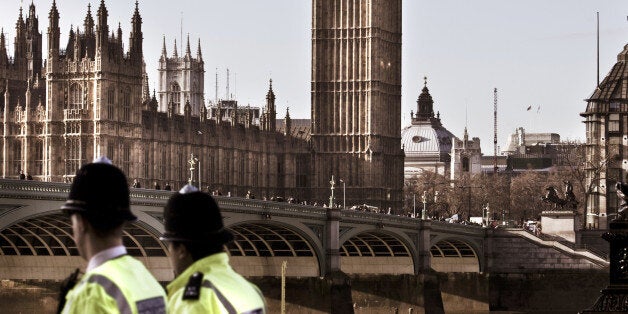
In the past few months, London has witnessed two shocking terrorist attacks centred on two major river crossings in the city. Considering the symbolic importance of bridges as metaphors in society, it can be no coincidence that these landmarks have been chosen. The Islamic fundamentalists who carried out these attacks, mowing down innocent civilians and stabbing further victims, seek to destroy the ties that bind society together - to destroy the bridges that make Britain Great. These bridges join communities, allowing different groups of people to connect. These bridges break down the divisiveness of separation and ghettoization. These bridges help break down prejudices, and allow people to navigate great chasms of misunderstanding.
On Wednesday 22nd March 2017, an 82-second attack at Westminster resulted in 4 fatalities and more than 50 people injured. On Saturday 3rd June 2017, an 8-minute attack at London Bridge and Borough Market saw at least 7 people killed, and dozens more injured. Since these terrible events that have changed the lives of hundreds of people, social media has been flooded with messages of solidarity, demonstrating the strength of the metaphorical bridges that bring London and Great Britain together.
After the Westminster terrorist attack, hashtags such as #WeAreNotAfraid, #WeStandTogether, #LondonIsOpen and #UnitedTogether trended on Twitter. One popular image showed individuals of different religions and ethnicities standing together under the caption 'What divides human beings is small and mean. What unites human beings is huge and wonderful'. It is still early days after the London Bridge attack, but one hashtag that has already trended, that demonstrates the solidarity and kindness of strangers, is #SofaForLondon, where accommodation was offered to those stranded after the attack. Thousands of people are choosing love over hate, and demonstrating this in any way they can.
It is imperative that all Britons, regardless of religion or ethnicity, unite against the common enemy, by any legal means necessary. In the face of the upcoming election, political leaders have endorsed the message that terrorists should not be allowed to derail the democratic process. Muslim groups have been quick to condemn the attacks, but there have already been reports of hate crimes in the capital, including racist graffiti on the Islamic community centre in Sutton. Certainly, the way some images have been used shows the automatic assumptions made in these situations, and how they can be used as a form of propaganda. One Muslim woman, for example, clearly traumatised by what she witnessed, was vilified on social media as being heartless and ignoring casualties on London Bridge, in order to push the anti-Muslim agenda.
At such times of national crisis, the emphasis has to be on what bridges the gap and brings people together. Remarkably, after the Westminster attack, the anticipated spike in anti-Muslim hate crime did not happen, although there was a noticeable increase in hate comments online. It will be some time before we can tell the true level of hate crimes after these attacks, but if the initial responses are anything to go by, there is hope that people are learning the difference between extremists and others.
This would not be the first time such differentiations have been made after initial violence against a minority group. When Italy joined the Axis powers during the Second World War, for example, there were anti-Italian riots and assaults on Italians across Britain. All Italians were labelled as Fascists, until this was later proved to be false. Similarly, there was much confusion over whether all Germans were pro-Nazi or genuine refugees at this time. Although all German males were interned in the spring of 1940, many of them were soon released because they were recognised to be friendly to Britain. Ultimately, the many Germans who were anti-Nazi were recognised for their positive contributions to this country both during and after the war.
This shows that there is hope in the current situation for all those potentially stigmatised by religion or ethnicity because of these events. We can only hope that despite the despicable acts of a terrible few to destroy the ties which bind us together, we will continue to build bridges between mainstream society and marginalised groups, and recognise that what makes us #UnitedTogether is greater than what tears us apart.